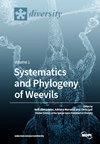Analysis of the Spatiotemporal Evolution and Factors Influencing Ecological Land in Northwest Yunnan from the Perspective of Leading the Construction of a National Ecological Civilization
IF 2.1
3区 生物学
Q2 BIODIVERSITY CONSERVATION
引用次数: 0
Abstract
Yunnan Province has emerged as a trailblazer in fostering an ecological civilization, assuming a prominent and pioneering role as the vanguard of ecological conservation in the southwestern region of China. Within the expansive tapestry of Yunnan Province, the northwest region has assumed a pivotal and indispensable position in spearheading the advancement of ecological civilization. To unravel the intricate and complex dynamics at play, this investigation employed a comprehensive array of methodologies, encompassing the sophisticated land use transfer matrix, the dynamic degree of land use, the center-of-gravity migration model, and the standard deviation ellipse. These sophisticated approaches were employed to delve deeply into the nuanced characteristics of the spatiotemporal evolution of ecologically pristine land in northwest Yunnan, while meticulously exploring the multifaceted factors that have intricately shaped its trajectory. The research findings illuminated several pivotal domains: (1) In terms of quantitative transformations, a substantial conversion of vast grassland expanses into cultivated land transpired from 2000 to 2010, spanning an expansive territory of 1303 km2. The most significant transformations were observed between forested land and grassland (591.81 km2) and from cropland to built-up land (51.99 km2). (2) Turning our attention to the pace of transformation, a closer examination of the land use dynamic degree revealed that urban construction land exhibited the highest degree of dynamism throughout the study period, demonstrating an average annual growth rate of 3.89% from 2000 to 2010, followed by a more accelerated growth rate of 6.14% from 2010 to 2020. In terms of the comprehensive land use dynamic degree, the annual rates of land use change from 2000 to 2010 and from 2010 to 2020 were only 0.1% and 0.03%, respectively. These figures indicate a gradual and deliberate overall pace of land use change in the northwest region of Yunnan throughout the entire study period. (3) Regarding spatial transformations, between 2000 and 2010, there was a discernible southeastern displacement of the center of gravity for ecological land. However, from 2010 to 2020, the center of ecological land experienced a migration towards the northwest, covering an impressive migration distance of up to 48,657.35 m. Simultaneously, the index of biological abundance exhibited high values in the northwest and low values in the southeast, indicative of favorable ecological conditions in the northwest region. (4) An analysis of the influencing factors revealed that the adaptive and dynamic nature of social and economic factors played a pivotal role in shaping the alterations observed in the ecological landscape. The study of ecological land use in northwest Yunnan holds the potential to provide valuable support for the protection and sustainable utilization of regional ecological land use, thereby contributing to the consolidation of the ecological security barrier in southwestern Yunnan and the preservation of biodiversity.以引领全国生态文明建设为视角的滇西北生态用地时空演变及影响因素分析
云南省已成为生态文明建设的先行者,在西南地区生态文明建设中发挥着突出的先锋作用。在云南省幅员辽阔的版图中,西北地区在生态文明建设的先锋队中占有举足轻重的地位。为了揭示其中错综复杂的动态,本研究采用了一系列综合方法,包括复杂的土地利用转移矩阵、土地利用动态程度、重心迁移模型和标准差椭圆。这些复杂的方法被用来深入研究滇西北生态原始土地时空演变的细微特征,同时细致地探索影响其轨迹的多方面因素。结果表明:(1)从数量转换的角度看,2000 - 2010年中国出现了大规模的草地向耕地转化,面积达1303 km2;林地向草地的转化(591.81 km2)和耕地向建设用地的转化(51.99 km2)最为显著。(2)对土地利用动态性的研究表明,在研究期间,城市建设用地的动态性最高,2000 - 2010年城市建设用地的年均增长率为3.89%,2010 - 2020年城市建设用地的年均增长率为6.14%。在土地综合利用动态性方面,2000 - 2010年和2010 - 2020年土地利用年变化率分别仅为0.1%和0.03%。这些数据表明,在整个研究期间,滇西北地区土地利用变化的总体速度是渐进的。(3)在空间变化上,2000—2010年生态用地重心有明显的东南偏移。然而,从2010年到2020年,生态用地中心经历了向西北的迁移,迁移距离高达48657.35 m。同时,生物丰度指数呈现西北高、东南低的特征,表明西北地区生态条件良好。(4)影响因素分析表明,社会经济因素的适应性和动态性在形成生态景观变化中发挥了关键作用。滇西北生态土地利用研究有可能为区域生态土地利用保护和可持续利用提供有价值的支持,从而为滇西南生态安全屏障的巩固和生物多样性的保护做出贡献。
本文章由计算机程序翻译,如有差异,请以英文原文为准。
求助全文
约1分钟内获得全文
求助全文
来源期刊

Diversity-Basel
Environmental Science-Ecological Modeling
CiteScore
3.40
自引率
12.50%
发文量
925
审稿时长
11 weeks
期刊介绍:
Diversity (ISSN 1424-2818) is an international and interdisciplinary journal of science concerning diversity concept and application, diversity assessment and diversity preservation. It is focused on organismic and molecular diversity. It publishes reviews, regular research papers and short notes in the regular issues. Related news and announcements are also published. Our aim is to encourage scientists to publish their experimental and theoretical results in as much detail as possible. Therefore, there is no restriction on the length of the papers. Full experimental details must be provided so that the results can be reproduced.
 求助内容:
求助内容: 应助结果提醒方式:
应助结果提醒方式:


